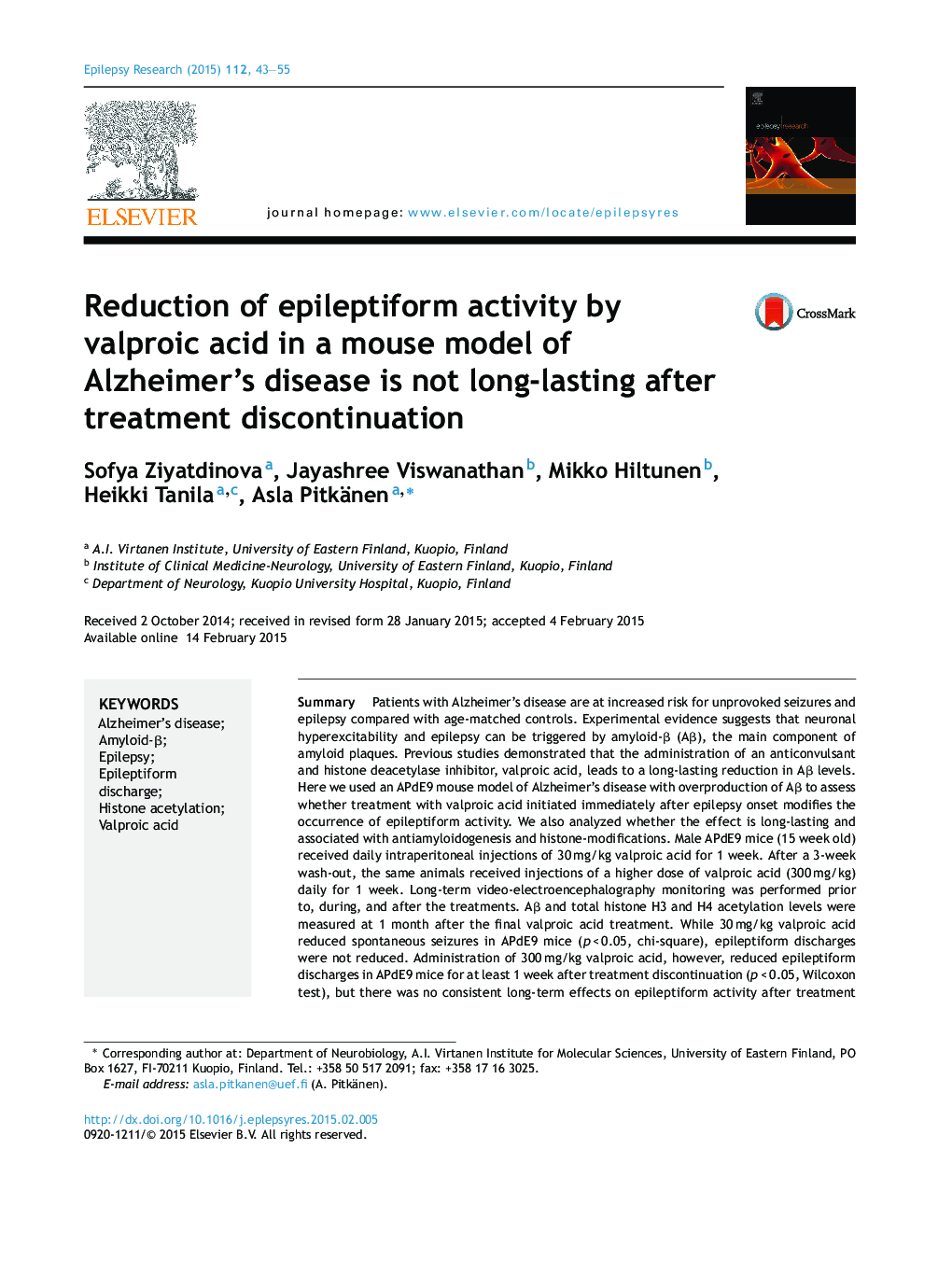| Article ID | Journal | Published Year | Pages | File Type |
|---|---|---|---|---|
| 3051972 | Epilepsy Research | 2015 | 13 Pages |
•VPA suppressed EDs in APdE9 mouse model of AD.•VPA had no long-lasting effect on epileptiform activity in APdE9 mouse.•VPA had no long-lasting antiamyloidogenic effects in APdE9 mouse.•VPA triggered a mild long-lasting increase in histone 3 acetylation.
SummaryPatients with Alzheimer's disease are at increased risk for unprovoked seizures and epilepsy compared with age-matched controls. Experimental evidence suggests that neuronal hyperexcitability and epilepsy can be triggered by amyloid-β (Aβ), the main component of amyloid plaques. Previous studies demonstrated that the administration of an anticonvulsant and histone deacetylase inhibitor, valproic acid, leads to a long-lasting reduction in Aβ levels. Here we used an APdE9 mouse model of Alzheimer's disease with overproduction of Aβ to assess whether treatment with valproic acid initiated immediately after epilepsy onset modifies the occurrence of epileptiform activity. We also analyzed whether the effect is long-lasting and associated with antiamyloidogenesis and histone-modifications. Male APdE9 mice (15 week old) received daily intraperitoneal injections of 30 mg/kg valproic acid for 1 week. After a 3-week wash-out, the same animals received injections of a higher dose of valproic acid (300 mg/kg) daily for 1 week. Long-term video-electroencephalography monitoring was performed prior to, during, and after the treatments. Aβ and total histone H3 and H4 acetylation levels were measured at 1 month after the final valproic acid treatment. While 30 mg/kg valproic acid reduced spontaneous seizures in APdE9 mice (p < 0.05, chi-square), epileptiform discharges were not reduced. Administration of 300 mg/kg valproic acid, however, reduced epileptiform discharges in APdE9 mice for at least 1 week after treatment discontinuation (p < 0.05, Wilcoxon test), but there was no consistent long-term effects on epileptiform activity after treatment withdrawal. Further, we found no long-lasting effect on Aβ levels (p > 0.05, Mann–Whitney test), only a meager increase in global acetylation of histone H3 (p < 0.05), and no effects on H4 acetylation (p > 0.05). In conclusion, valproic acid treatment of APdE9 mice at the stage when amyloid plaques are beginning to develop and epileptiform activity is detected reduced the amount of epileptiform activity, but the effect disappeared after treatment discontinuation.
